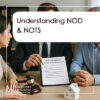
Asset protection is a crucial aspect of financial planning, especially for individuals with substantial holdings, those in high-liability professions, and elderly individuals aiming to preserve their legacy. Effective asset protection involves structuring asset ownership to shield it from potential creditors, ensure financial security, and maintain wealth across generations. This comprehensive guide synthesizes key insights from experts, including a recent webinar led by Jacob Stein, Esq., managing partner at Aliant, LLP, to provide practical strategies for safeguarding assets through legal means.
Understanding Asset Protection
Asset protection is about creating legal structures that make it costly, uncertain, and time-consuming for creditors to access your assets. Contrary to common misconceptions, legitimate asset protection does not involve hiding assets or evading taxes but rather organizing ownership to minimize vulnerability to financial claims while adhering to legal and ethical standards.
Key Factors to Consider:
- Identity of the Debtor: Whether assets are owned individually or by an entity, and whether both spouses are liable.
- Nature of the Claim: Specific claims versus general risks.
- Identity of the Creditor: Differences between government entities and individual creditors.
- Type of Assets: Varying protection levels for retirement accounts, personal property, real estate, business interests, and more.
- Level of Protection Desired: Balancing the desired protection against cost, complexity, and risk exposure.
- Timing: Implementing strategies well before any creditor threats arise.
- Nature of the Assets: Specialized approaches for different asset types, such as real estate, business interests, and retirement accounts.
These factors inform which asset protection strategies, such as trusts, LLCs, or corporate structures, are suitable for a specific client.
Key Asset Protection Tools and Strategies
1. Trusts as a Fundamental Asset Protection Tool
Trusts are powerful and flexible tools for asset protection, adaptable to various asset types and client needs.
- Domestic Asset Protection Trusts (DAPTs): Established under U.S. state laws (e.g., Nevada, Delaware) that allow asset protection for self-settled trusts.
- Foreign Trusts: Offshore trusts offer robust protection, often shielding assets from U.S. judgments but come with strict compliance requirements and potential IRS scrutiny.
- Irrevocable Trusts: Separate assets from the individual’s personal estate, making them inaccessible to creditors. Once assets are placed in an irrevocable trust, they generally cannot be withdrawn or changed, necessitating careful planning.
Advantages of Irrevocable Trusts:
- Separation of Ownership: Prevents creditors from accessing the assets as the settlor no longer legally owns them.
- Maintaining Control: Strategic drafting can provide flexibility, such as allowing changes to beneficiaries.
- Tax Benefits: Can offer a “step-up” in basis for assets upon death, potentially reducing capital gains taxes for heirs.
2. Limited Liability Companies (LLCs)
LLCs are frequently used for asset protection, particularly for holding real estate or other valuable assets.
- Protection from Personal Liability: Creditors can place a lien on the LLC’s economic interest but generally cannot access the LLC’s underlying assets.
- Separate from Corporate Stock: Unlike corporate stock, which creditors can attach, an LLC generally protects assets more effectively from direct claims.
Note: LLCs aren’t foolproof. Creditors may attempt to “pierce the corporate veil” if they can demonstrate that the LLC is essentially an alter ego of its owner.
3. Retirement Accounts
Retirement accounts offer varying levels of protection depending on the type and jurisdiction.
- ERISA-Qualified Plans (e.g., 401(k)s): Generally protected from creditors under federal law, though protection does not extend once funds are distributed.
- IRAs: In California, IRA funds are subject to a means test to determine exemption from creditor claims, considering factors like age and available assets. A new law effective January 1, 2024, extends this means test to ERISA-qualified distributions as well.
Strategies:
- Relocating to States with Stronger Protections: States like Texas and Florida offer more favorable protection laws.
- Rolling Over Funds to an ERISA-Qualified Plan: May enhance protection for substantial retirement accounts.
4. Qualified Personal Residence Trusts (QPRTs)
A QPRT helps reduce estate taxes by placing a home in a trust, removing it from the estate while allowing the client to live in the property for a set period. This is especially useful for clients with large estates.
Consideration: If an estate is under the federal estate tax threshold, a traditional irrevocable trust might be more suitable.
5. Life Insurance and Annuities
In California, life insurance and annuity income streams have limited protection compared to states like Florida. For portfolios heavily reliant on these assets:
Strategies:
- Additional Planning: Incorporate other asset protection methods.
- Relocating: Consider moving to states with more favorable protection laws.
Specific Considerations for Elder Asset Protection
Asset protection for seniors differs from general planning due to unique concerns like long-term healthcare costs, inheritance planning, and Medicaid eligibility.
1. Medicaid Planning:
- Asset Transfers: Moving assets to family members or irrevocable trusts can help meet eligibility requirements.
- Look-Back Period: Transfers must be done well in advance due to Medicaid’s scrutiny period.
2. Homestead Exemptions:
- State Variations: States like California offer homestead exemptions to protect a primary residence from certain creditors, while states like Texas and Florida allow unlimited protection.
3. Exemption Planning:
- Retirement Accounts, Personal Property, and Life Insurance: Proper designation of these assets can shield wealth from creditors while supporting retirement needs.
Planning Strategies in Marital Contexts
Community property states, such as California, present unique asset protection challenges. Strategies to protect marital assets include:
1. Premarital and Postnuptial Agreements:
- Asset Division: Allow couples to decide on the division and characterization of assets, distinguishing between community and separate property to limit liability.
2. Transmutation Agreements:
- Converting Property: Transform community property into separate property through formal agreements, protecting one spouse’s assets from the other’s creditors.
3. Trusts for Spouses and Heirs:
- Income Provision: Ensure a surviving spouse receives income while preserving the principal for children, protecting assets from future creditors, divorce settlements, or remarriage complications.
Avoiding Fraudulent Transfers
Understanding California’s Uniform Voidable Transactions Act (UVTA) is crucial to avoid fraudulent transfers, which occur when assets are moved to evade creditors.
Key Considerations:
- Scrutiny Factors: Insolvency, lack of consideration, or suspicious timing can trigger asset transfer investigations.
- Badges of Fraud: Secrecy or last-minute transfers signal potential evasion and can lead to legal challenges.
- Early and Transparent Planning: Begin asset protection planning well in advance and maintain transparency to minimize legal risks.
Asset Protection in Divorce
Divorce proceedings can present opportunities for asset protection, particularly in California.
Strategies:
- Asset Transfers within Divorce Context: Certain transfers may shield assets from creditors if managed carefully and in compliance with legal standards.
- Legal Compliance: Ensure all transfers adhere to legal requirements to avoid fraudulent transfer claims.
A Practical Approach to Asset Protection
The right asset protection plan is tailored to each client’s unique needs, balancing security with flexibility. Key steps include:
- Assessment of Individual Needs: Evaluate the specific factors influencing asset protection, such as the nature of assets, potential creditor threats, and personal circumstances.
- Selection of Appropriate Tools: Utilize trusts, LLCs, QPRTs, retirement account strategies, and other tools based on the client’s situation.
- Implementation and Maintenance: Establish the chosen structures early, ensuring compliance with legal standards and adapting to changing circumstances.
- Consultation with Experienced Attorneys: Work with legal professionals to navigate the complexities of asset protection, ensuring strategies are effective and lawful.
Conclusion:
Asset protection is about strategically structuring and protecting assets to meet both legal and ethical standards. Whether safeguarding elderly wealth, preparing for potential liabilities, or preserving a legacy, proactive and tailored asset protection planning ensures that assets are secured from unforeseen claims and preserved for future generations. By establishing trusts, utilizing exemptions, managing marital and separate property, and adhering to legal guidelines, individuals can create a robust financial buffer that honors their legacy while complying with state and federal laws.
For personalized asset protection strategies, consult with experienced legal professionals who can guide you through structuring trusts, LLCs, and other entities to secure your assets against potential claims.
For more information or to schedule a consultation, please contact Vokshori Law Group at (855) 855-2608 or visit www.VokLaw.com to learn more.






